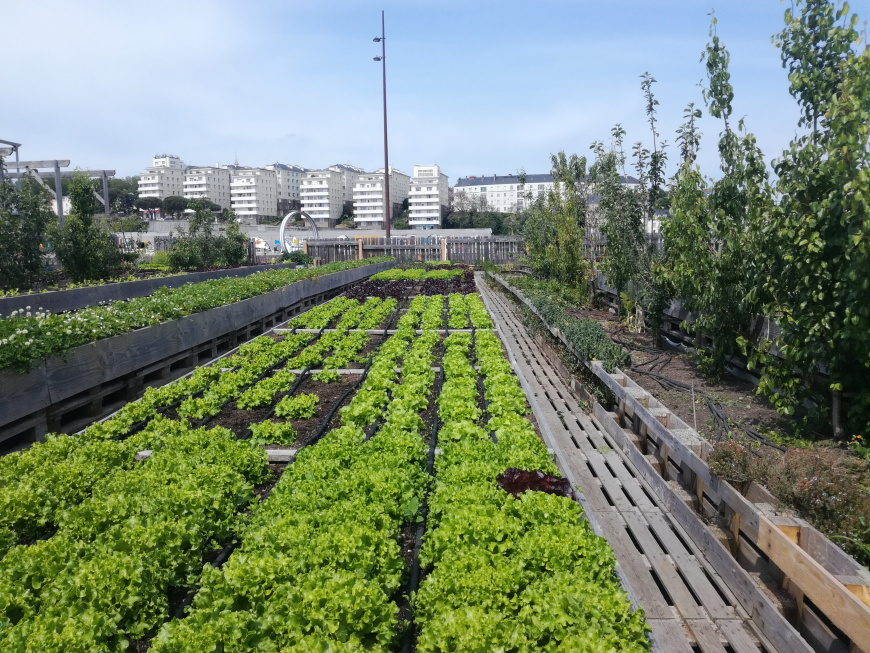Some Of City Blooming
Some Of City Blooming
Blog Article
9 Easy Facts About City Blooming Explained
Table of ContentsCity Blooming for BeginnersGetting The City Blooming To WorkCity Blooming - An OverviewNot known Facts About City BloomingThe Basic Principles Of City Blooming

Actually, as you stroll the streets of the Bronx, Southside Chicago or East Oakland, you might see have also seen huge stories of ripening vegetables and fruits being harvested. What precisely are metropolitan ranches and area gardens? Are they various? If so, just how? And a lot more importantly, just how can you sustain them? Urban agriculture, metropolitan farming, or city horticulture is the technique of cultivating, processing and distributing food in or around urban areas.
Generally, city farming as a technique is a bigger investment than gardening. There are plenty of extra hours invested into the trivial matters of farming, from the plant plan to the tending of your beds. This time dedication tackles a whole brand-new definition once you recognize the objective that is being worked in the direction of and devoted, specifically that of gaining a plentiful yield of plants to be consumed.
A neighborhood garden is a solitary item of land gardened collectively by a team of people. Community yards utilize either specific or shared plots on private or public land while generating fruit, veggies, and/or plants grown for their attractive appearance. The standard design below is that a huge team of people each contribute a relatively tiny amount of time to functioning their own story, and receive the fruits of their labor consequently.
The Ultimate Guide To City Blooming

, and community organizations by helping them develop and expand their own yards. The differences in between neighborhood yard and metropolitan ranch are nuanced, though in the end the very same basic task takes placefood plant cultivation however within different business frameworks - sustainable gardening.
Urban farms are typically more business and modern technology oriented, with the main function of making best use of returns and offering fruit and vegetables. Commercial city ranches are commonly targeted at expanding manufacturing on generally small land location with innovations in technologies such as tank farming, hydroponics, and greenhouses and may partner with an industrial cooking area to produce locally-produced value-added items such as jams and sauces.
The Basic Principles Of City Blooming
The produce is usually grown on a much smaller sized scale and is taken home to eat at home or to share. By giving much needed green rooms in penniless, concrete metropolitan areas, they permit the benefits of backyard gardening to those lacking yards, and function as exceptional instances of self-organization and community advocacy.
Some neighborhood yards, frequently in city locations, move into expanding for business usage while some city ranches open up their land for more socially aware benefits. No matter of how you specify and set apart the 2, they are both positive forces for great in cities around America and the globe.
As every one of Tiny Axe Peppers' warm sauces are sourced with peppers from neighborhood yards, your acquisitions directly aid money these local tasks (https://www.startus.cc/company/city-blooming). Take part in the change by.
A close friend of mine recently commented in a conversation about horticulture that "It's fascinating, I have actually constantly believed that farming as a method is rather like gardening. There are similar facets to both don't you believe?" To the nonprofessional that remark from my good friend would have gone without much thought, it appears sensible so why not take it therefore? As I spent even more and even more time in my Urban Farming course I have actually come to recognize that to state that horticulture is a mini expansion of agriculture would certainly be a little bit of stretch.
A Biased View of City Blooming
They both revolve around the treatment of plants for some goal that can be nourishment, profit or simply the satisfaction of the craft. Furthermore they both require a financial investment in addition to a time financial investment, something that a great deal of individuals in our fast paced life do not have a great deal of - sustainable gardening.
We can see that the resemblances are bountiful, however are the differences enough to develop a difference? As a trainee at NYU I have the chance to collaborate with the leave It Much better Foundation, a group that teaches basic nourishment and gardening to high college trainees. https://us.enrollbusiness.com/BusinessProfile/6739712/City%20Blooming#google_vignette. This experience gave me an in-depth venture right into the globe of amateur gardening beyond what lots of people have actually been in call with
Farming as a method is a larger investment than horticulture. There are many much more hours spent into the minutiae of farming, from the crop strategy to the often tending of your beds.
The ordinary garden enthusiast sets about his responsibilities as a chore instead than a requirement and because of this differentiates his or herself from the farmer. With this difference website link in hand, they are both comforting and stress-free workouts that any individual can pick up, which by itself must be an ad for both.
The 15-Second Trick For City Blooming
Something went incorrect - eco-friendly practices. Wait a minute and attempt once again Try once more
Report this page